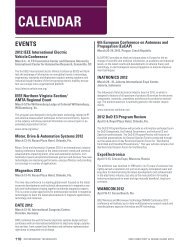2011 EMC Directory & Design Guide - Interference Technology
2011 EMC Directory & Design Guide - Interference Technology
2011 EMC Directory & Design Guide - Interference Technology
Create successful ePaper yourself
Turn your PDF publications into a flip-book with our unique Google optimized e-Paper software.
K auf f m a n<br />
filters<br />
Figure 5. Grounded DUT hook-up test leads.<br />
the connection wires to a DUT shown in Figure 5 were<br />
measured for isolation. This figure shows two test leads,<br />
both coaxially aligned with shields and ends shorted to an<br />
aluminum ground plane. The exposed lengths are about<br />
50mm (2.0") long, and the distance above the ground plane<br />
is about 13mm (1/2)". If we measure the isolation between<br />
these wires, we get a rough estimate of the lead-in and<br />
lead-out coupling around a feedthrough capacitor. Figure 6<br />
shows the isolation for the grounded wires shown in Figure<br />
5. Frequencies below 1 MHz have over 70 dB of isolation.<br />
Above 1 MHz a noticeable reduction in isolation occurs,<br />
with 50 dB indicated at 13 MHz. The isolation tends to reduce<br />
to about 30 dB at 100 MHz . The isolation maintains<br />
a value of about 30 dB up to 1Ghz, where a further drop in<br />
isolation occurs. This effectively means that "open leads"<br />
to the DUT could produce a noise floor at about 30 dB at<br />
high frequencies. MIL-STD-220B is effective at measuring<br />
the lower frequency performance including the effects of<br />
Figure 6. Isolation between grounded DUT hook-up leads.<br />
voltage and current, but measurements at frequencies above<br />
10MHz can be compromised by the "noise floor" due to this<br />
interlead coupling.<br />
NexTek has developed a line of compact high current<br />
interferencetechnology.com interference technology 109




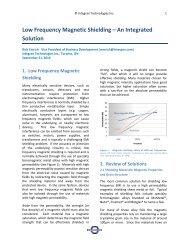

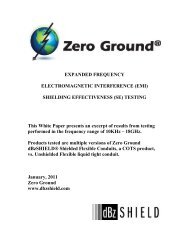
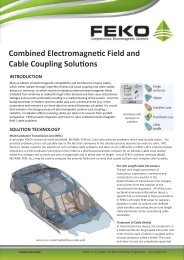



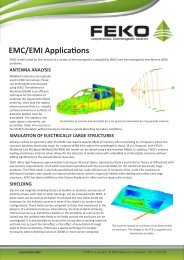
![[ thursday ] morning sessions 8:30 am-noon - Interference Technology](https://img.yumpu.com/23176841/1/190x247/-thursday-morning-sessions-830-am-noon-interference-technology.jpg?quality=85)
